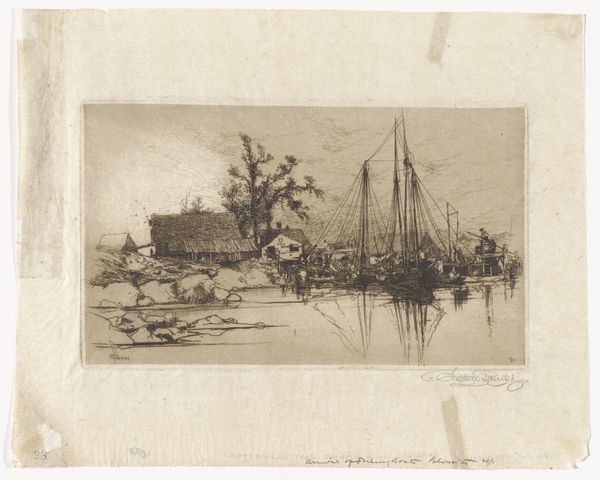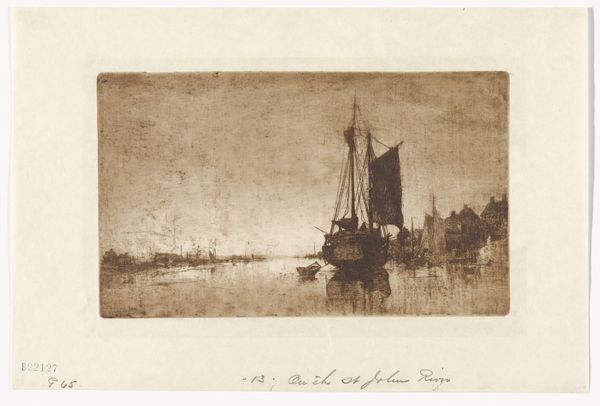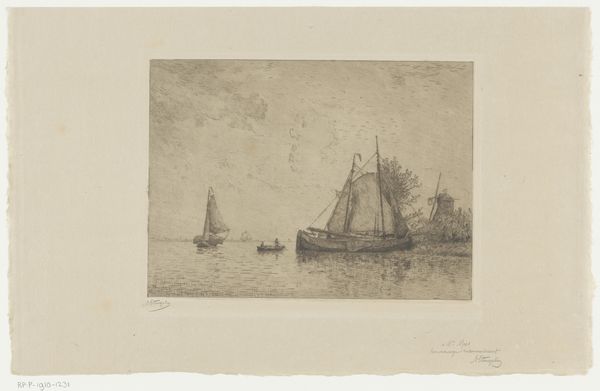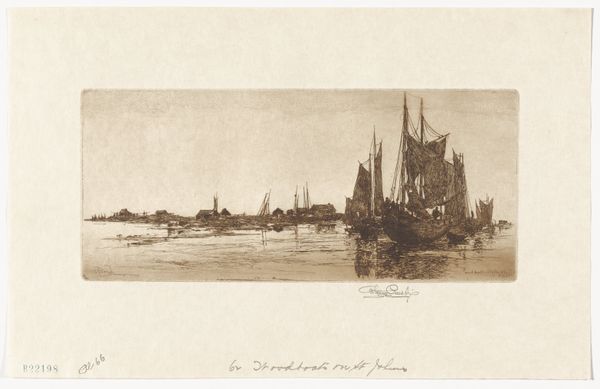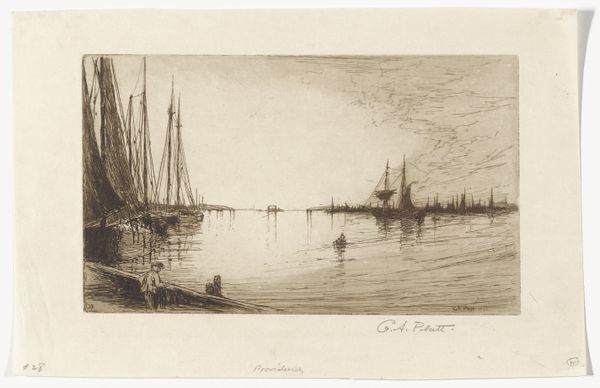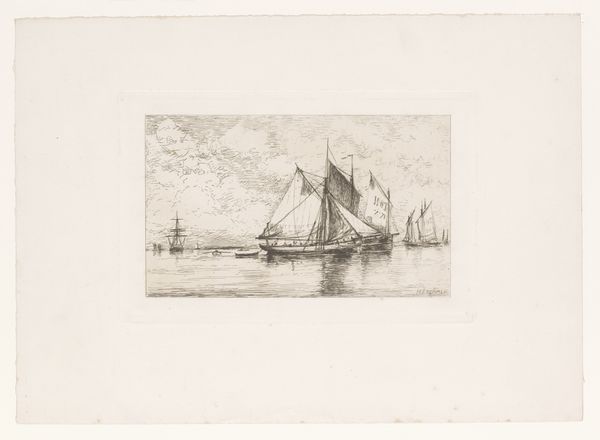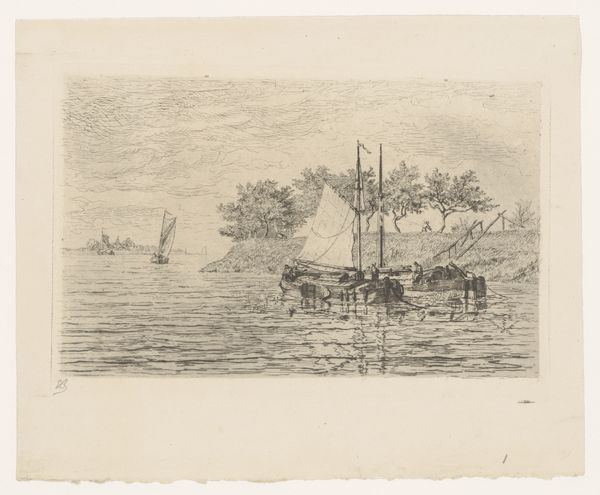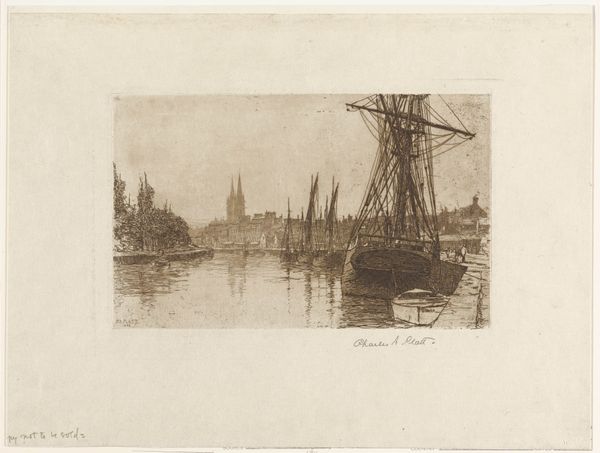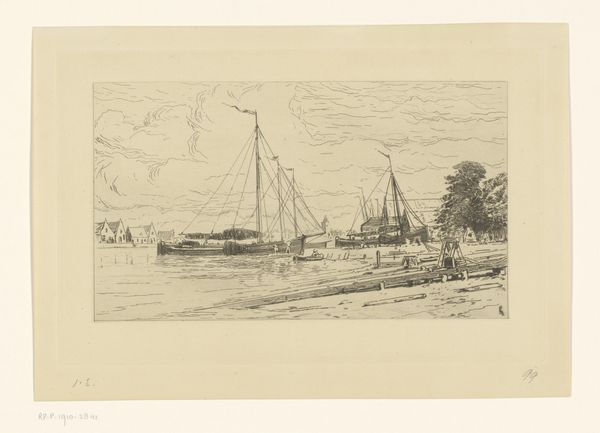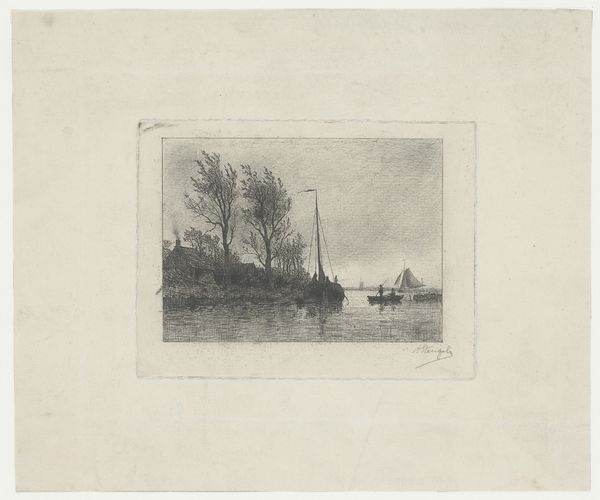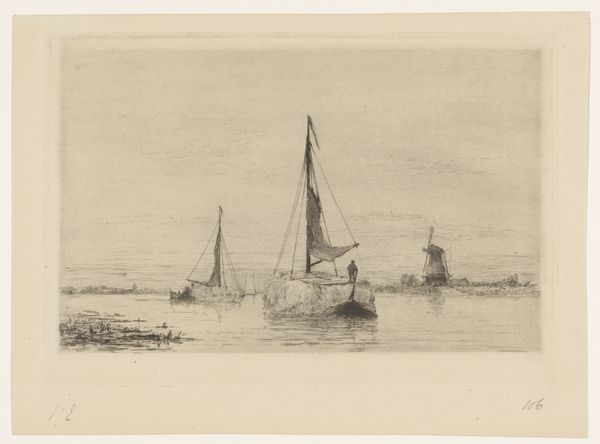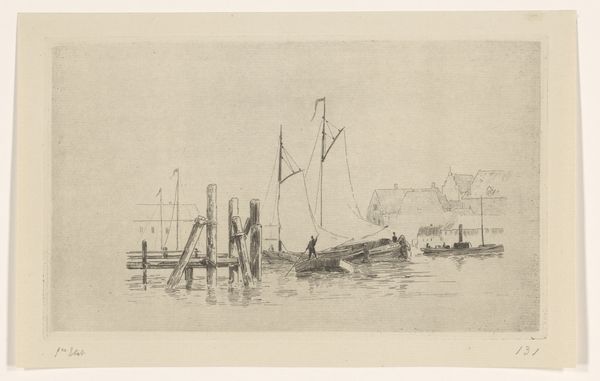
print, etching
# print
#
etching
#
landscape
#
realism
Dimensions: 5 9/16 x 9 9/16 in. (14.13 x 24.29 cm) (plate)10 3/8 x 13 11/16 in. (26.35 x 34.77 cm) (sheet)
Copyright: Public Domain
Curator: I’d like to introduce you to Stephen Parrish’s “East Gloucester,” a 19th-century etching held here at the Minneapolis Institute of Art. Editor: There's something almost melancholic about it, isn’t there? A stillness permeates the scene, even with the presence of the boats. The tones are quite muted; an umber haze dominates. Curator: The image evokes a sense of temporal stasis, absolutely. Consider the historical context of Gloucester at the time: it was an extremely vital fishing port, a hub of maritime labor. Parrish often sought to capture the nuances of labor and place. We need to understand the impact industrial fishing practices had on working class lives in a maritime region like this one. The docks here probably facilitated exploitation under specific social conditions. Editor: An important reading! Yet I also wonder, regardless of its deeper themes, if the effectiveness lies more simply in the subtle tonal gradations, the artist's mark-making; see how he contrasts the dense cross-hatching of the foreground vegetation against the much sparser application of the etched line work across the water's surface and open sky. Curator: That dichotomy, that contrast speaks, to me, of nature versus the manufactured, human imposition upon it. The fishing industry certainly placed tremendous burdens on Gloucester's ecosystem, which were very often distributed unequally among classes. Who labored and who profited are questions that have to come to mind. Editor: Fair enough, though it also reveals Parrish’s sensitivity to value and form. Think how the rigging of the ships so boldly reaches toward the sky; they’re like dark needles knitting together sky and sea, visually arresting on their own merits. Curator: They also act as visual reminders of a precarious means of working-class livelihood at that time, the risks faced and dangers confronted under changing material circumstances, conditions shaped as much by the human-created docks as by natural laws and ocean currents. Editor: A worthy consideration indeed. Ultimately, both readings provide new appreciation for this work. Curator: I agree, this interdisciplinary way of encountering art enriches us all.
Comments
No comments
Be the first to comment and join the conversation on the ultimate creative platform.
